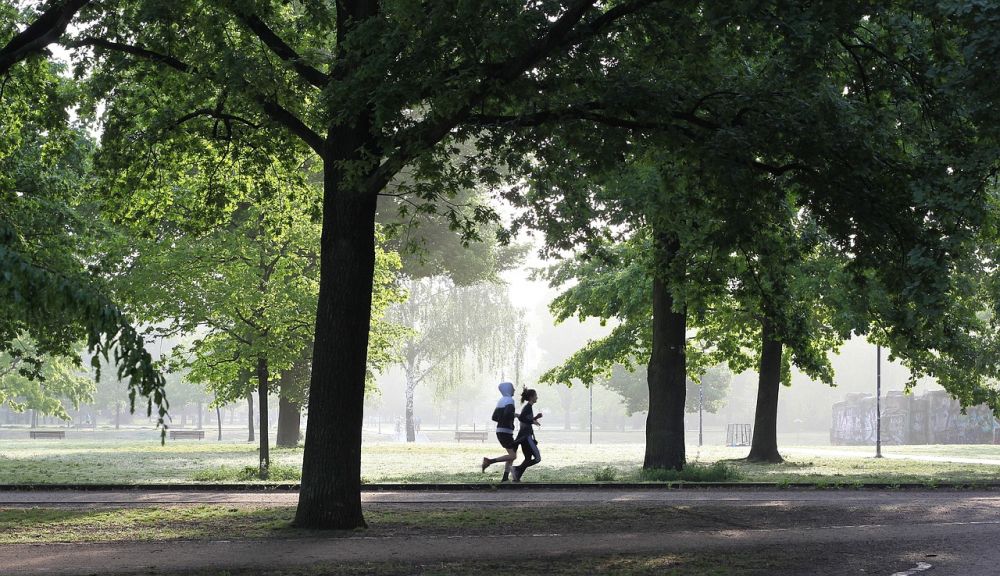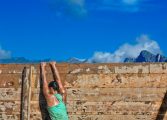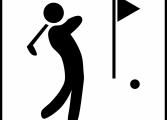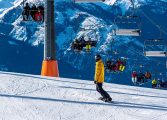Bouldering: En Guide till den Spännande Sporten

Introduction:
Bouldering is a form of rock climbing that has gained immense popularity in recent years. It offers a unique and intense experience, combining physical strength, problem-solving skills, and a deep connection with nature. In this article, we will provide a comprehensive overview of bouldering, exploring its different types, popular destinations, and the quantitative measurements associated with this sport. We will also discuss how various bouldering techniques differ from each other and delve into the historical pros and cons of this exciting activity.
What is Bouldering?

Bouldering is a type of rock climbing that involves climbing shorter and more challenging routes without the use of ropes or harnesses. The climbs, known as ”problems,” are usually performed on boulders or small rock formations. Unlike traditional rock climbing, which focuses on ascending tall walls, bouldering is concentrated on intricate movements, balance, and technique. The absence of ropes makes bouldering a more accessible sport and encourages climbers to push their limits in a controlled environment.
Types of Bouldering:
1. Indoor Bouldering:
Indoor bouldering has witnessed a surge in popularity due to its convenience and year-round accessibility. Climbing gyms provide climbers with artificially designed walls that mimic the natural features found in outdoor boulders. These facilities not only offer a safe environment for climbers of all skill levels but also provide an opportunity for training and honing techniques.
2. Outdoor Bouldering:
For adventure enthusiasts seeking a direct connection with nature, outdoor bouldering provides an unparalleled experience. From majestic mountains to serene forest settings, outdoor bouldering allows climbers to enjoy the beauty of their surroundings while challenging themselves physically and mentally. Popular outdoor bouldering destinations include Fontainebleau in France, Bishop in the United States, and Hampi in India.
Quantitative Measurements in Bouldering:
Bouldering involves several quantitative measurements that help climbers assess and compare their performance. These include:
1. Difficulty Ratings:
Bouldering problems are assigned difficulty ratings using various grading systems, such as the V-scale (used predominantly in North America) or the Fontainebleau scale (widely adopted in Europe). These grades reflect the technicality and physical demands of each problem, allowing climbers to challenge themselves progressively and set achievable goals.
2. Hang Time:
Hang time, also known as the ”dyno,” measures the amount of time a climber spends suspended mid-air during a dynamic move. It showcases a climber’s explosiveness, body control, and ability to execute precise movements.
3. Heights Reached:
The height reached during a bouldering climb is another quantitative measurement that showcases a climber’s progress. It denotes the maximum height a climber attains while attempting a problem, indicating their physical reach and body coordination.
Differentiating Styles in Bouldering:
Bouldering encompasses various styles and techniques, each requiring specific skill sets and approaches. Some distinctive styles include:
1. Technical Bouldering:
Technical bouldering focuses on intricate movements and delicate footwork. Climbers in this style rely on their balance, flexibility, and body positioning to navigate challenging routes that demand precision and control.
2. Dynamic Bouldering:
Dynamic bouldering embraces explosive movements and powerful jumps. Climbers engaging in this style exhibit impressive agility, strength, and timing to execute daring moves and reach distant holds.
3. Slab Climbing:
Slab climbing is characterized by nearly vertical walls with minimal handholds and footholds. Climbers practicing this style showcase exceptional balance, body tension, and mental fortitude to overcome the lack of physical features on the wall.
Historical Pros and Cons of Bouldering:
Bouldering has evolved significantly over time, resulting in both advantages and disadvantages. Some historical pros and cons include:
1. Accessibility:
Advantage: Bouldering’s accessibility allows climbers to engage in the sport without extensive gear or technical knowledge. It attracts a diverse range of individuals and promotes inclusivity in the climbing community.
Disadvantage: The increased popularity of bouldering has led to overcrowding in some areas, impacting the natural environment and creating safety concerns.
2. Skill Building:
Advantage: Bouldering offers a platform to develop essential climbing skills, such as problem-solving, balance, strength, and mental resilience. These skills can be transferred to other forms of climbing, enhancing overall climbing abilities.
Disadvantage: The intense physical demands of bouldering can lead to overuse injuries, particularly without proper training and technique.
Conclusion:
Bouldering is a thrilling sport that combines physical strength, mental acuity, and a deep connection with nature. Whether indoor or outdoor, understanding the nuances of bouldering styles, experiencing its quantitative measurements, and appreciating its historical pros and cons can provide climbers with a well-rounded perspective. With its accessibility and ability to challenge individuals of all skill levels, bouldering continues to enthrall and inspire climbers around the world.
















































